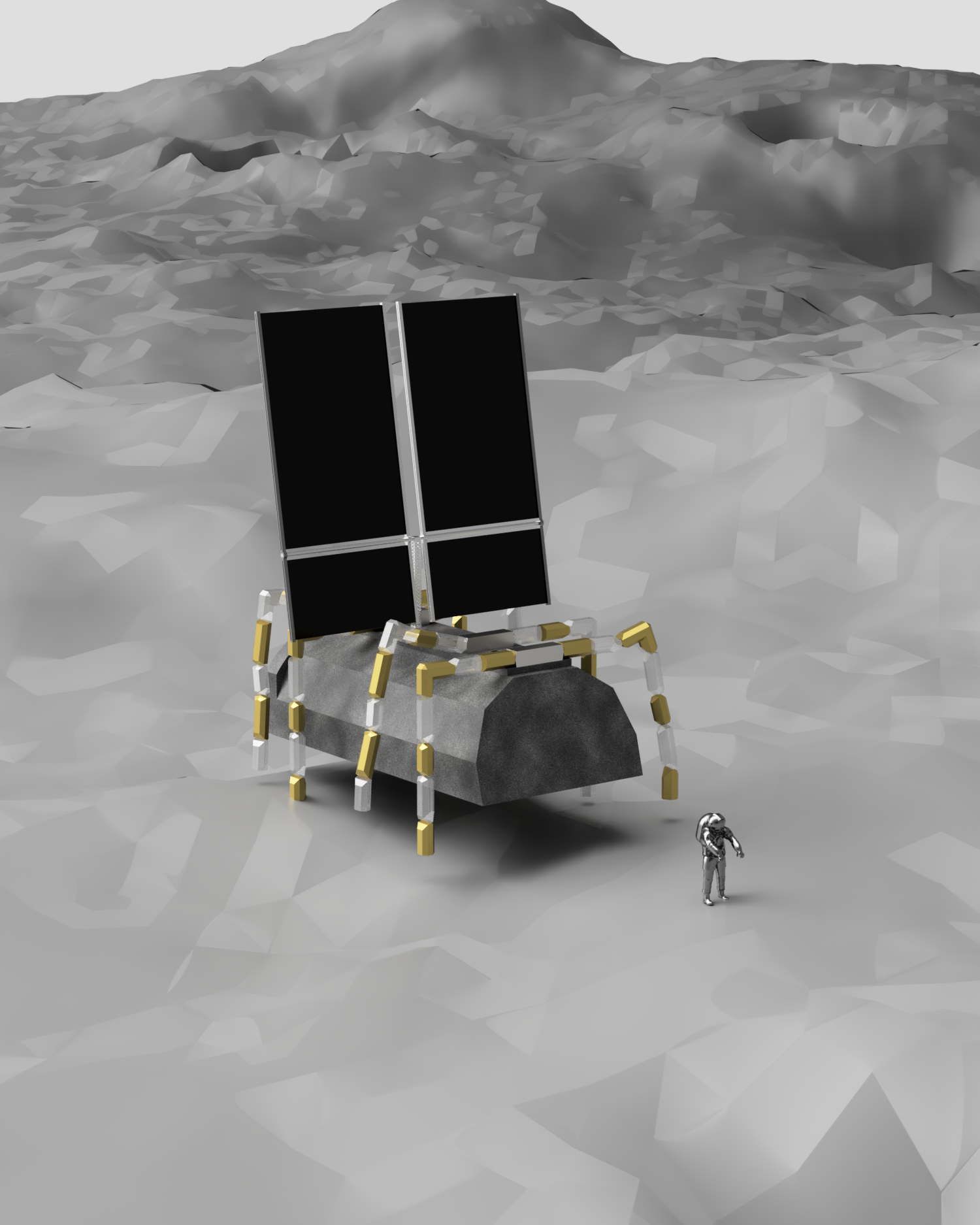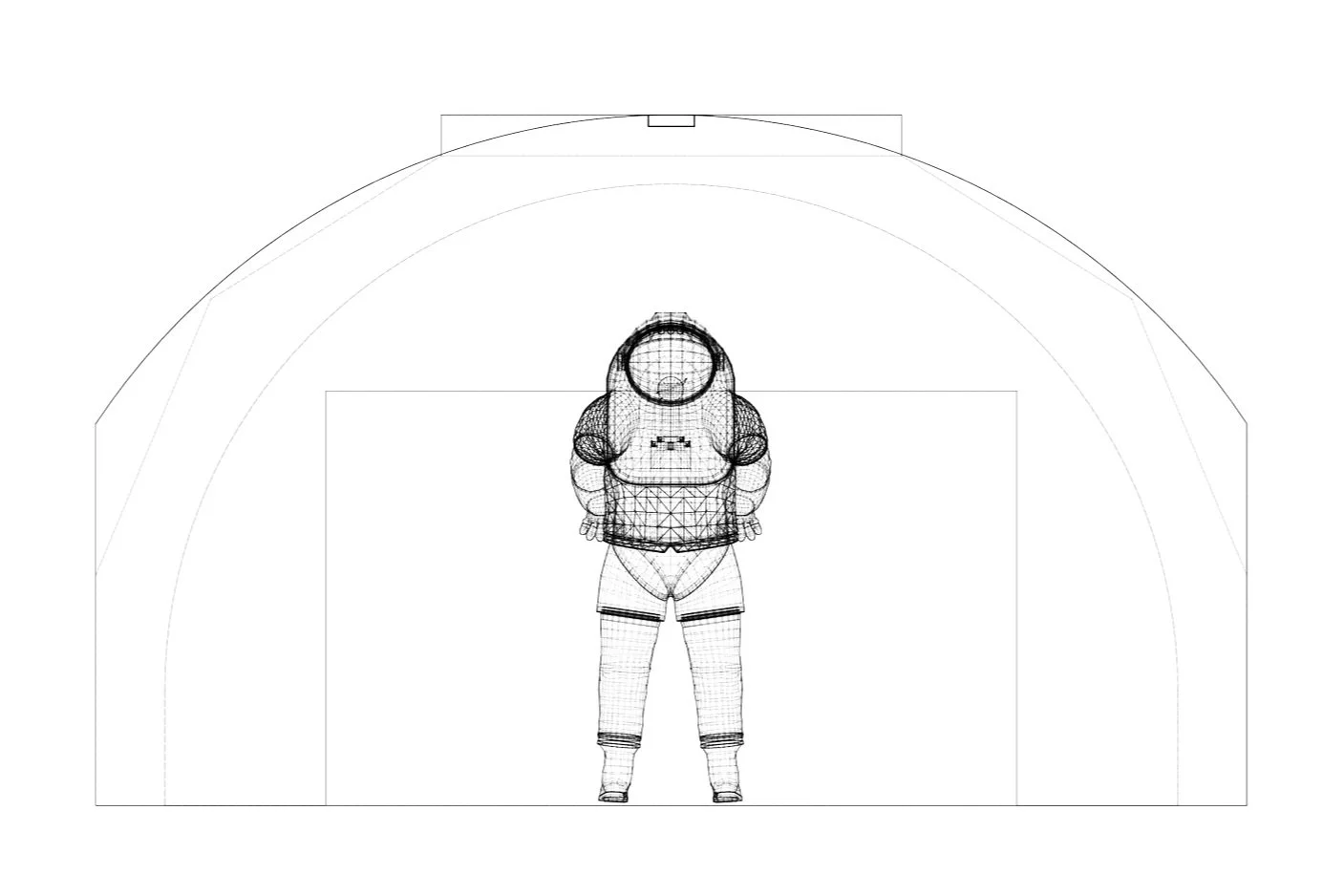MARS on the Moon?
2042, April 3, 04:23:14 GMT
The Mobile Anti Radiation System, walking next to an astronaut in a space suit.
NOAA Solar observation satellites detect a high-intensity solar flair, with an initially estimated 70+% chance of impacting the Earth-Moon System
2042, April 3, 04:24:02 GMT
Additional observations from other satellites begin to refine initial risk models. Chinese and Indian satellites refine arrival time and intensity models. Current models indicate an S4 event. With an ETA to the Earth-Moon System in 4 hrs 12 min.
2042, April 3, 04:24:48 GMT
The Lunar Communication Network has confirmed 97% of all nodes within the system have received initial warning packets, among those alerted are an expedition of mining contractors on their way to Ibn Bajja. Within minutes the mining crew has shut down all appropriate equipment and begun to move towards the lumbering hulk they have nicknamed Bowser. Bowser drops the heavy shell of the Mobile Anti Radiation System. While crew members make their way into the dark grey rough Quonset hut-like shell.
2042, April 3, 14:30:07 GMT
The mining crew steps out into a world that doesn’t look quite like how they left it. For the most part the desolate lunar landscape seems roughly unchanged, but closer to the Radiation Shelter things are a bit more chaotic. Bowser is no more, instead the massive walking machine has separated into sub-robots nicknamed Koopa and Troopa. Koopa and Troopa have dutifully moved large piles of rocks and regolith to the sun facing side of the Shelter. Crew members begin to review radiation readings from dosimeters…. (I wanted to keep writing this bit, but I lack enough practice in the topic of estimating radiation doses from a given solar storm.
Astronaut standing inside the MARS shielded segment.
To the present.
The idea behind the Mobile Anti Radiation System started 2021 while taking a class on human spaceflight where my classmates and I were tasked with outlining a proposal for a lunar outpost. During that time we were asked how we might reduce the risk of radiation exposure to astronauts working/living on the moon for months at a time. While the safest option would be to simply have your scientists spend their entire lunar visit in a deeply buried habitat, that doesn’t feel like a realistic solution from a crew morale/mission flexibility stand point. In an ideal world additional options need to be available.
One of the things that got strongly reinforced for me in graduate school was the concept of the swiss cheese system engineering. Basically, whenever it is possible don’t act as if any one solution that you have implemented will be the perfect protection from something going wrong. By layering solutions where you do your best to understand where weaknesses lie and how other solutions can plug those gaps,you can minimize overall risk. MARS represents a concept of one of the swiss cheese protection layers for astronauts working on the moon.
MARS is intended to serve as an improvement over simply relying on luck and topology to keep astronauts safe while working on the lunar surface. For an astronaut to have the same level of radiation protection as they would experience on the surface of the Earth they would need over 6 meters of regolith between their bodies and the radiation source, generally the sun. There is no way we can easily carry around a container with 6 meter thick walls, fortunately we don’t need to go so hard core. A 20 to 50 cm thick layer of water reduces effective radiation doses by about 40%, not perfect but a non-trivial drop at the same time. Holding the water would be a metallic composite shell, likely made using mostly locally refined metals combined with sealants and electronics sent from Earth.
Making the shell thicker than 50 cm of water (and how ever much composite it might need) enters a land of diminishing returns with respect to vehicle mass and radiation protection. While astronauts would certainly benefit from thicker shielding, it would be unrealistic to carry that mass continuously. Depending on logistics/manufacturing abilities, it might be useful to stockpile sandbags near target locations, or to dig ditches for MARS to drop that bunker into. Maybe small robots just push regolith on top, it will depend.
The mechanical legs represent an intent to minimize the risk of lunar dust getting into inaccessible nooks and crannies that could lead to mechanical/electrical failures. The joints could either be made from covered servos or compliant mechanisms, personally I like the idea of using compliant mechanisms, but that’s more of a sci-fi quotient vs real rational.
Radiation direction is a complicated question that would take some decent research efforts beyond what a dude in his spare time can do. The radiation that astronauts can actively do something about is radiation that comes from a solar storm, because this radiation is coming from the sun, it has a general directionality to itself, that means, in theory, you don’t need to have symmetric shielding for your bunker, just where the worst radiation is coming from. The reason solar storm radiation is so complicated is that it comes in the form of a high energy plasma that impacted by the electrical charge of the local environment. A simple wall between an astronaut and solar radiation can still have particles whip around the wall in complicated paths that could hit our explorer. Acknowledging this factor will be important in designing protective measures.
Hopefully this was interesting. There were lots of ideas and clarifications I just got a bit too overwhelmed to include, I will probably follow up on this post as this idea has been a bit of a worm in my brain for a while now. As usual, please feel free to leave any thoughts/questions that crop up.


